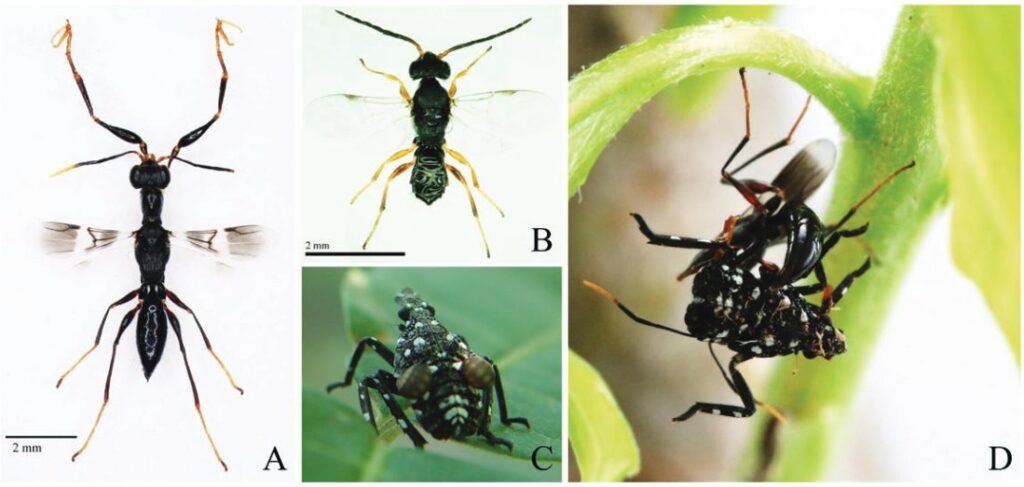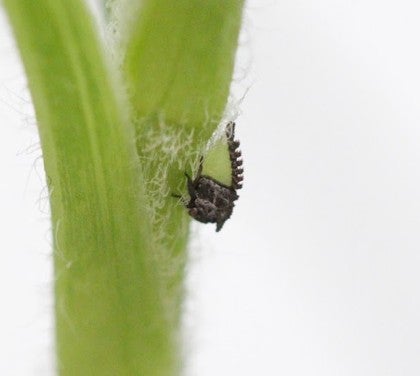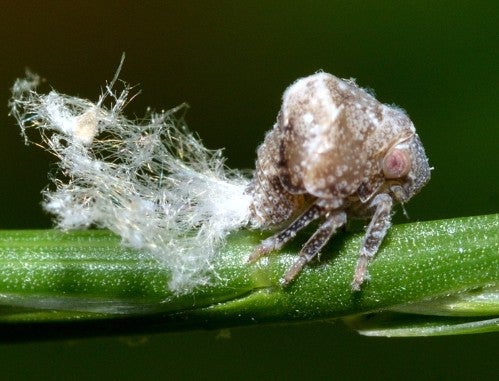What is Spotted Lanternfly?
The spotted lanternfly (Lycorma delicatula) is an invasive planthopper native to China that is currently spreading through the Mid-Atlantic and Northeastern United States. These planthoppers are in the order of Hemiptera, or true bugs, that are closely related to other planthoppers, treehoppers, and leafhoppers. All insects in this order have piercing-sucking mouthparts to extract sugary sap from the phloem of host plants. This invasive agricultural pest feeds on plants like grapes, hops, stone fruits, and hardwood trees. Nymphs (immatures) and adults of these hoppers typically feed in large numbers. While feeding, plant sap (honeydew) is excreted that leads to damaging sooty mold growth, which can reduce photosynthesis and damage plants.

Biocontrol for Spotted Lanternfly
There are currently no biological control agents available for release to control spotted lanternfly (SLF) at this time. USDA researchers at the Forest Pest Methods Laboratory in Buzzards Bay, Massachusetts are evaluating two classical biological control agents from China that are natural enemies of SLF in its native range. Two agents from China that the USDA selected for study are Anastatus orientalis, an egg parasitoid and Dryinus sinicus, a nymphal parasitoid that attacks the second and third instar nymphs of the spotted lanternfly. In China, due to the presence of parasitoids, the spotted lanternfly is only a problem in years that favor a population outbreak. For the United States, the long term goal is to identify and develop a classical biological control program utilizing parasitoids to manage spotted lanternfly populations and minimize the heavy intervention of insecticides.

Contribution by the URI Biocontrol Lab
Before implementing a classical biological control program for the spotted lanternfly, it is essential to determine the host specificity of a candidate biocontrol agent. The host range testing process evaluates how restricted a biocontrol agent is to its target pest, or if it has a wider host range, and therefore would not be a suitable candidate for release. It is also important to understand the potential impact of the organism on the ecosystem of the invaded region.
Currently, the URI Biocontrol Lab and other researchers are contributing to the host specificity testing of Dryinus sinicus at the FPML lab in Massachusetts. In the URI Biocontrol laboratory, we support the research by rearing colonies of potential non-target species to provide nymphs that will be utilized in the host specificity testing of the nymphal parasitoid. Non-targets are species that are phylogenetically close and biologically similar to the spotted lanternfly, including the two-striped planthopper, wide-footed treehopper, and more species from other representative orders.


